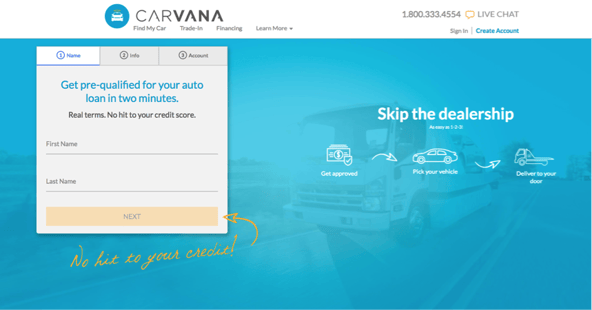Things change quickly in today’s online marketplace. eCommerce industries that saw rapid growth only five years ago have since been overtaken by new sectors. These market shifts have had a significant impact on the outdoor apparel industry in particular. After years of steady online growth, revenue for outdoor apparel is slowing down as a few large brands file for bankruptcy and consumers grow frustrated by the lack of revolutionary new products. Dick’s Sporting Goods, the largest remaining sporting goods store, has followed the lead of other specialty retailers and is now adopting the price-matching model to maintain a competitive edge.
So what’s differentiating the faster-growing eCommerce industries? And how can your online store manage to compete with them? To help position your eCommerce store for success, we’re going to take a closer look at the top three fastest growing eCommerce industries and uncover ways to help your online store compete with big online retailers.
Automotive
The automotive industry is really heating up the eCommerce space, disrupting big brick-and-mortar stores from car dealerships to auto part shops. Online-only car dealers like Carvana are revolutionizing the industry by providing a whole new user experience that starkly contrasts traditional car sales. Offering a stress-free shopping experience, a 7-day test period and options for pickup or free delivery, they have modernized the way to buy and sell a car.
Amazon is also pushing further into the market by forging partnerships with several large auto part supplies companies in the United States. Auto parts sales continue to shift online, increasing 16 percent from last year and bringing in $7.4 billion in sales. Marketing research predicts that it will continue to rise as the year progresses, with current projections hitting $8.9 million. To remain competitive in a rapidly changing marketplace, companies in the automotive industry should consider adopting a data-driven marketing strategy.
Pet Care
If there is one thing consumers can’t stop spending money on, it’s their pets. Every year, as pet ownership continues to grow, pet love manifests itself into high sales numbers for pet food and supplies.
The pet store shopping experience can be fun, especially if there are puppies frolicking in the window. But these days, the convenience of ordering pet care online is undeniably appealing. With many online pet stores offering free and fast delivery, it’s not surprising that online pet supplies sales increase 15 percent each year.
For online merchants in this space to compete, they need a website that engages their audience. Through informative content, one way to lure customers in is through user-generated content (UGC). For example, you can share images of the relationships customers forge with their pets to inspire new and repeat purchases.
User-generated content is defined as any content that is created and submitted by unpaid contributors who want to engage with your brand. This can come in many forms, like social sharing, product reviews, or videos. Many consumers regard it as a powerful tool to gauge a brand’s authenticity.
Don’t forget to make a plan for the upcoming holiday season. Last year, 46% of pet toy sales occurred in the seven days leading up to Christmas Day. Try to capture last-minute shoppers with a clever email campaign with a time-sensitive offer for man’s best friend.
Jewelry
The jewelry industry—fine jewelry, in particular—is quickly making its mark in the online marketplace. Because fine jewelry shopping tends to be an emotionally charged experience, consumers have traditionally made these purchases in a trusted store. Online jewelry stores should focus on building consumer trust and creating a seamless shopping experience if they want to remain competitive. This is one vertical where it is especially important to leverage social proof to build trust in your brand.
A powerful marketing strategy based on psychology, social proof is a strategic way to utilize user-generated content to resolve any purchasing hesitation. Just look at the broad appeal of social proof like product reviews. In fact, 70 percent of shoppers read them before they purchase online. eCommerce sites that provide product reviews will garner more consumer trust, prompting shoppers to convert and make a purchase.
The Secret to Competing with Big Brands
Facing off against major brands can feel like a David and Goliath scenario, but there are actually great opportunities for small to medium businesses to outperform bigger companies.
If you want to compete with large online retailers for the long term, focus on building a brand that consumers can trust. Here are a few quick tips on how to build a reputation that inspires long-term engagement.
Communicate your brand: Tell an effective brand story and be consistent with your tone, style, and design across all marketing channels, whether that is email campaigns, social media, or your website. As any dog lover can attest, Castor and Pollux is a trusted source of organic pet food and treats. As the manufacturers of the only USDA certified organic pet food, they use their social media channels to tell the story of their brand, showcasing the pets and their owners that love their products. Paired with the playful hashtag #PurposefulPetFood, they offer plenty of social proof that their products are top quality.
Have a clear and unique selling proposition: Why should your customers choose you over big brands? If you don’t know, then neither will your customers. Invest some time into creating your unique selling proposition (USP) so you can outline what separates you from the competition. Once you have that defined, you can parlay it into a sales strategy to motivate purchase decisions.
Have exceptional customer service: People enjoy shopping at small boutiques for the intimate shopping experience and excellent customer service. Provide shoppers with high-quality customer service and personalize their experience. Over time, your customers may even recommend you to their friends, which will only grow your community. As they continue to return to your online store, try offering a referral discount in appreciation for their support.
Take a data-driven approach to marketing: The most successful eCommerce businesses use customer data to make better decisions for their customers and their business. By leveraging your marketing data, you have valuable information about their shopping habits, preferences, and how to market to them in their favored way.
Provide an omnichannel experience: Many businesses in the fastest growing eCommerce industries have brick-and-mortar stores in addition to their online stores. Providing different methods for shopping is called an omnichannel experience. Even without a physical storefront, you can provide an omnichannel experience by ensuring the user experience is seamless across multiple devices and online platforms.
Conclusion
eCommerce brands everywhere can find inspiration in the marketing strategies of today’s fastest growing eCommerce industries. Find your competitive edge by providing a streamlined user experience and creating emotional brand connections from user-generated content and social proof. Once you have a program in place, enlist the services of an automated marketing platform to bring your plans to fruition.
To stand out in an increasingly crowded marketplace, adopt a data-driven marketing strategy that builds lasting relationships with your customers. By forging strong personal connections, you can build a powerful brand that your customers will trust. Done the right way, you could even outpace the dominating businesses online!





